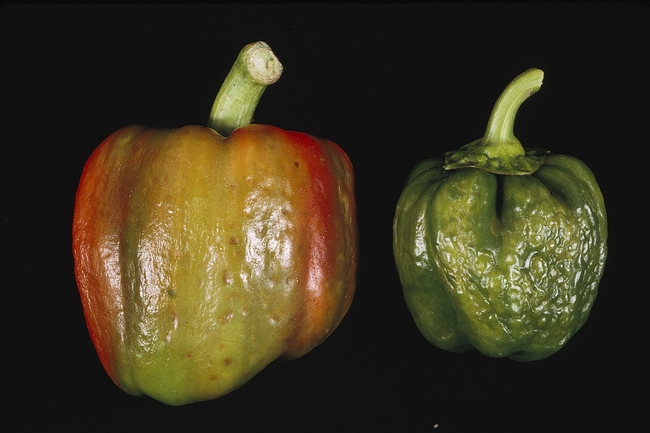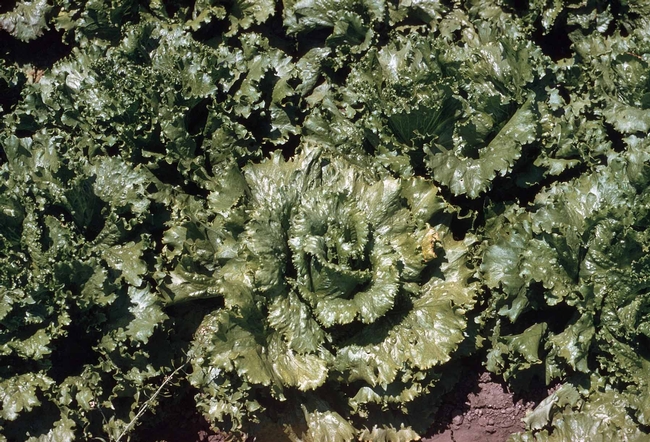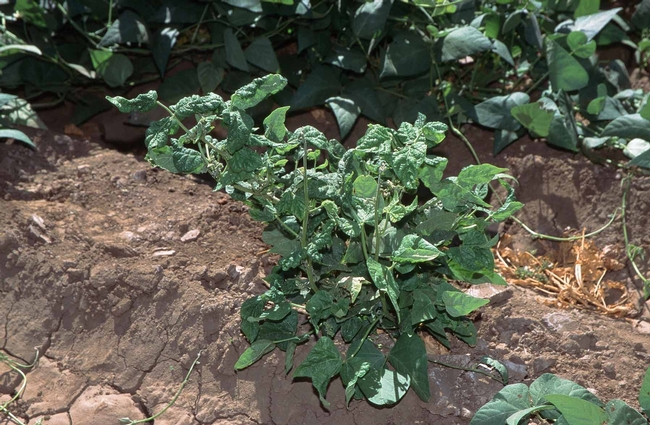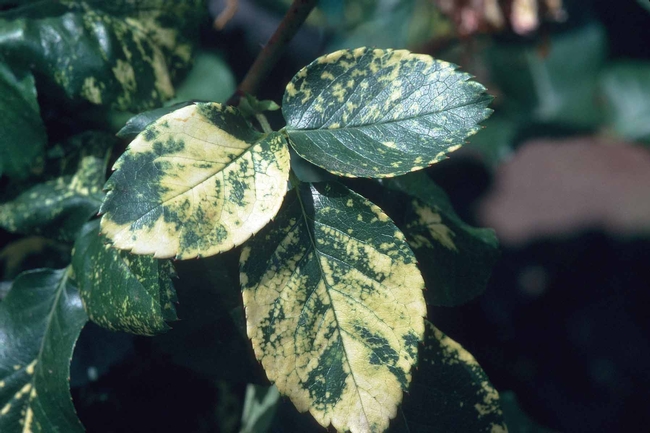A virus can reduce a plant's growth, lower its yield, and result in inferior fruit, vegetables and flowers. Viruses are often very host specific. Recognizing symptoms can help you take appropriate action, where possible, to manage a virus and hopefully prevent its spread. The following are several viruses that can plague the home garden.

Viruses of this type can be identified by green and yellow mottling (“mosaic”) symptoms. In addition to the common Tomato Mosaic Virus (TMV) discussed in the previous article, mosaic viruses can affect cucumber, cauliflowers and lettuces. Choose resistant plants when available for your garden. Mosaic viruses are mostly spread by insects, especially aphids and leafhoppers. Try covering your plants with a floating row cover or use aluminum foil mulches to prevent these insects from infecting your plants. Some types of weeds may serve as hosts of the virus, so controlling weeds may be a deterrent.
Cucumber Mosaic Virus (CMV) is one of the most common mosaic viruses. It is usually spread by aphids. It was first found on cucumbers, hence its name; but it can affect many other woody and herbaceous plants, including tomato, melon, and squash. Symptoms include leaves mottled with yellow and/or light and dark green spots or streaks. Young plants may have twisted leaves and become stunted.
Tomato plants infected with CMV are stunted and exhibit “shoestring syndrome,” in which the edges of the leaves fail to develop. Leaf veins appear as long, narrow strips. Tomatoes are small and misshapen, and yield is reduced.
Once plants are infected with CMV, there is no control. Remove and destroy all the infected plants. Disinfect gardening tools that have come into contact with infected plants.
Cauliflower Mosaic Virus (CaMV) primarily infects plants such as cabbage, brussels sprouts, cauliflower, broccoli, rape seed and turnip. It is transmitted in a non-circulatory manner by aphids, which can acquire this virus within one minute of feeding on an infected plant and can transmit the virus to a healthy plant just as quickly. Systemic symptoms include vein clearing – a condition in which the veins on a plant's leaves become translucent. Later, a striking mosaic pattern may develop. Plants can be stunted, and infected cabbage heads develop internal brown flecks and spots when stored in the refrigerator.
Temperatures between 61 and 68 degrees favor symptom expression in plants. CaMV is often found as a mixed infection along with Turnip Mosaic Virus, resulting in more severe symptoms than when either virus is present alone.
Eradicate cruciferous weed hosts (such as wild mustard, wild radish and wintercress) and incorporate crop debris immediately after harvest.

Infected plants may reach full size, but the older outer leaves will be yellow, twisted, and otherwise deformed. On head lettuce, the plant may not form heads or the wrapper leaves may curve away from the head. Developing heads may be deformed or brown, necrotic black or brown flecks occur on the wrapper leaves.
Plant resistant lettuce varieties when available and use certified seed that has been tested for the virus. Control weeds to remove potential virus sources and destroy post-harvest residue from crucifers, broccoli, cabbage, cauliflower, Chinese cabbage, and mustard.
Practice good aphid management. Control aphid-protecting ants, knock off aphids with a stream of water, or use a silver-reflective mulch to repel the aphids. Apply fertilizer only as necessary.

To determine the difference between wilting from lack of water and wilting from curly top virus, soak the soil around plants in the early evening. If the plant doesn't revive overnight, it's likely the plant has Curly Top Virus.
There is no cure or chemical control for curly top. Shade cloth can be placed over plants using stakes to discourage leafhoppers and to help tomato and pepper plants grow better and produce more fruit during the hottest summer months. Remove and destroy diseased plants.
Viruses that affect ornamental plants
Some viruses have actually been encouraged for their aesthetic effect on flowers or leaves. The most famous example of this is the Tulip Breaking Virus which can create flame patterns on tulip flowers and led to the speculative market in tulip bulbs that gripped much of Dutch society in the early 17th century. Today, “broken” tulips with patterns on the flowers are the result of breeding, not viral infection.
There is a virus that affects Abutilon spp. (flowering “maple” or Indian mallow) and is considered desirable. Abutilon Mosaic Virus (AMV)is transmitted by infected sap moved on cutting tools and through grafting. This virus causes yellow to whitish blotches on leaves. It causes no apparent harm and propagators select infected plants to sell.
Much less attractive and desirable is the Rose Mosaic Virus Complex (RMVc), which is one of the most widespread rose diseases in the United States. This virus may be a complex of more than one pathogen. Symptoms in leaves include yellow line banding in a zigzag or “oak leaf” pattern, mosaic, and watermarking (characterized by faint yellow swirls or squiggles). In vein banding, the veins are yellow, and the leaf is green. This virus may also cause distorted or stunted blooms.
Symptoms of Rose Mosaic Virus are more pronounced in spring and fall. In summer heat, growth appears normal and the virus seems to disappear. A plant may be several years old before showing any symptoms. Damage can range from mild and easily overlooked to seriously stunting. Virus-infected plants may grow more slowly, produce delayed or fewer flowers, and become more susceptible to frost damage.

The UC Master Gardeners of Butte County are part of the University of California Cooperative Extension (UCCE) system. To learn more about us and our upcoming events, and for help with gardening in our area, visit our website. If you have a gardening question or problem, call the Hotline at (530) 538-7201 or email mgbutte@ucanr.edu.